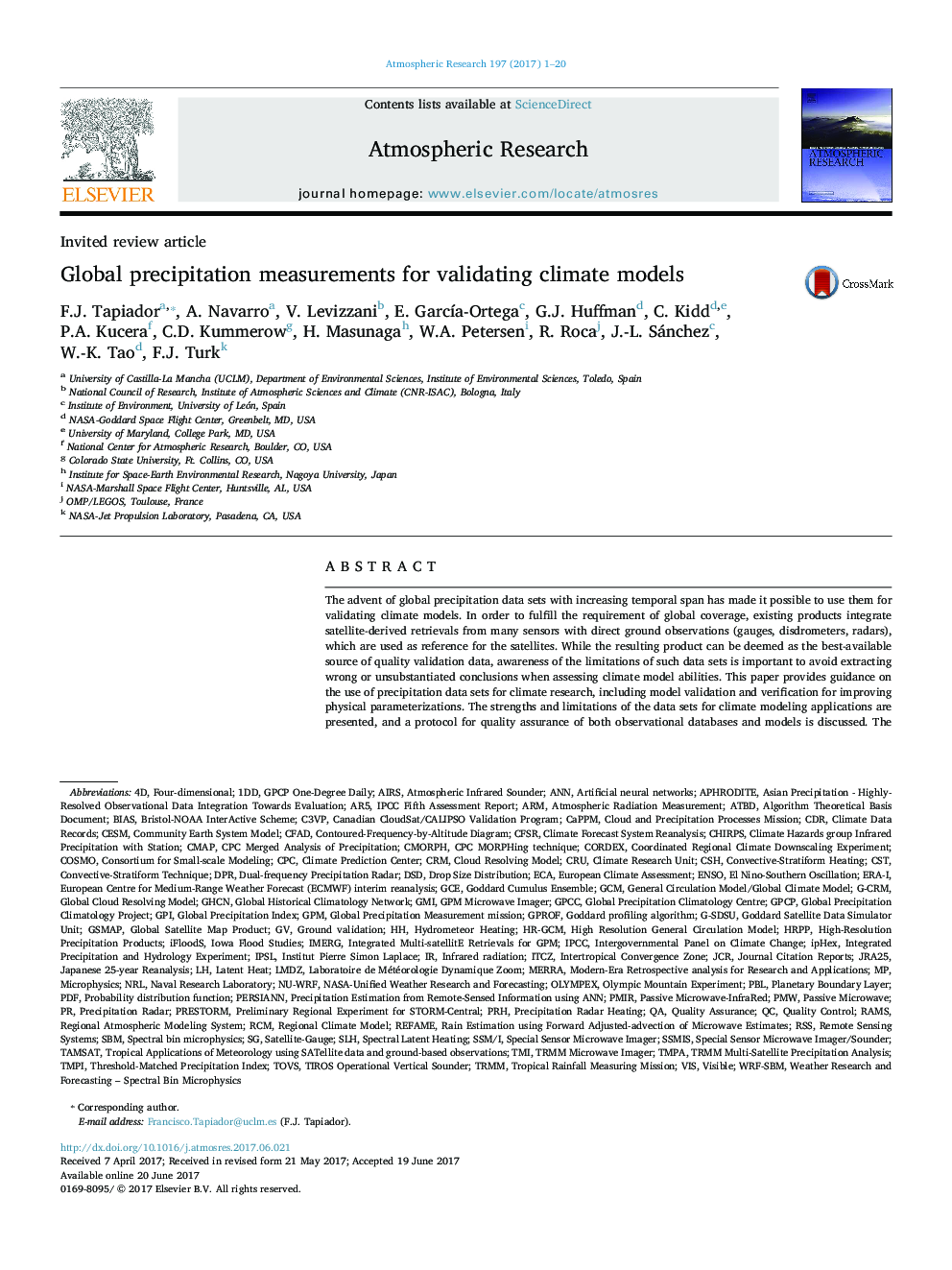| Article ID | Journal | Published Year | Pages | File Type |
|---|---|---|---|---|
| 5753726 | Atmospheric Research | 2017 | 20 Pages |
â¢This paper provides guidance on the use of precipitation data sets for climate research, including model validation and verification for improving physical parameterizations.â¢Existing precipitation datasets have limitations that need to be addressed for climate model validation.â¢A protocol for quality assurance of both observational databases and models is presented.
The advent of global precipitation data sets with increasing temporal span has made it possible to use them for validating climate models. In order to fulfill the requirement of global coverage, existing products integrate satellite-derived retrievals from many sensors with direct ground observations (gauges, disdrometers, radars), which are used as reference for the satellites. While the resulting product can be deemed as the best-available source of quality validation data, awareness of the limitations of such data sets is important to avoid extracting wrong or unsubstantiated conclusions when assessing climate model abilities. This paper provides guidance on the use of precipitation data sets for climate research, including model validation and verification for improving physical parameterizations. The strengths and limitations of the data sets for climate modeling applications are presented, and a protocol for quality assurance of both observational databases and models is discussed. The paper helps elaborating the recent IPCC AR5 acknowledgment of large observational uncertainties in precipitation observations for climate model validation.
